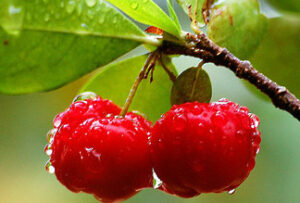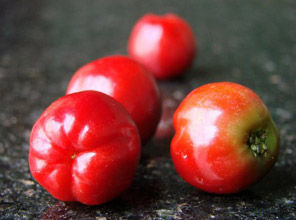A fruit rich in vitamin C
The acerola or semeruco with the scientific name “Malpighia emarginata” is a fruit that is produced by the Malpighiaceae family plant of the same name. This plant grows spontaneously in Central America, the Antilles and the wet tropical areas of South America.
Acerola is also called the cherry of West India, cherry of Barbados, cherry of Jamaica or cherry of the Antilles, precisely because of its external similarity to the cherry.
Description
The acerola has a rounded shape with a diameter between 1 to 2 centimeters and 20 grams of weight. The skin is smooth, red or yellow colored and externally it looks like the cherry of the Old World.
However in its interior presents segments and three pits very tighten together. The texture of the acerola is juicy and soft, its taste is bittersweet-acid, which reveals its high content of vitamin C.
It possesses three seeds that represent between 19 and 25% of its total weight. Presents a green color when in development, changing to yellow shades and red when is ripe.
Tree
It’s a bush that measures three to six meters high, with rough dark bark, a winding stem, light and white wood. It possessed numerous branches, short and fragile, that in the wild have thorns.
Properties
After the Terminalia ferdinandiana fruit, this is the edible fruit with the most ascorbic acid content ever known, reaching between 16.000 and 172.000 part per million of vitamin C, meaning from 1000 mg to 2000 mg/100 g.
It’s also rich in vitamin B6, vitamin B1, vitamin A, flavonoid and essential minerals (iron, calcium, phosphorus, potassium and magnesium).
The acerola is used in traditional medicine to facilitate recovery from asthenia or high weakness condition, also used to assist in the treatment of diarrhea and liver problems. The importance of acerola has been related to its nutritional character represented by its high content of vitamin C.
Its role as an antioxidant has been particularly relevant in recent years as the acerola has antioxidant activity based on its ability to sequester free radicals, making it suitable for the prevention of age-related diseases.




